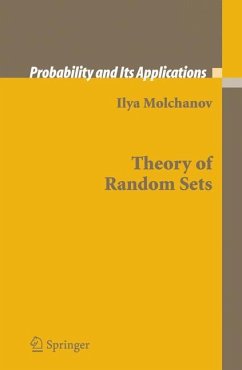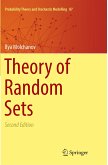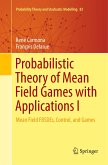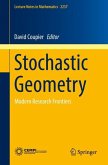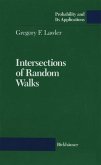Stochastic geometry is a relatively new branch of mathematics. Although its predecessors such as geometric probability date back to the 18th century, the formal concept of a random set was developed in the beginning of the 1970s. Theory of Random Sets presents a state of the art treatment of the modern theory, but it does not neglect to recall and build on the foundations laid by Matheron and others, including the vast advances in stochastic geometry, probability theory, set-valued analysis, and statistical inference of the 1990s.
The book is entirely self-contained, systematic and exhaustive, with the full proofs that are necessary to gain insight. It shows the various interdisciplinary relationships of random set theory within other parts of mathematics, and at the same time, fixes terminology and notation that are often varying in the current literature to establish it as a natural part of modern probability theory, and to provide a platform for future development.
The book is entirely self-contained, systematic and exhaustive, with the full proofs that are necessary to gain insight. It shows the various interdisciplinary relationships of random set theory within other parts of mathematics, and at the same time, fixes terminology and notation that are often varying in the current literature to establish it as a natural part of modern probability theory, and to provide a platform for future development.
From the reviews:
"Together with the foundations of the modern probability theory Kolmogorov introduced the concept of a random set. ... The book is written in a theorem-proof style, where the proofs are quite detailed and clearly presented. ... to enable easier reading, the author provides visual illustrations where necessary. ... the author provides a vast bibliography on the subject, which is completely searchable on author's website. The book should be read and even more studied by any researcher or a student considering research in this field." (Ita Cirovic Donev, MathDL, January, 2006)
"This book is part of the Springer-Verlag series 'Probability and its applications'. ... The most remarkable aspect of the book is the reader-friendly structure and the style in which it has been written. There are masses of examples either worked out in the book or left for the reader. A number of facts are equipped with graphical illustrations. This book has a good index and index of notations, and a very detailed bibliography ... . It will be an essential part of every mathematical library." (V. K. Oganyan, Mathematical Reviews, Issue 2006 b)
"The book under review develops ... an approach in a self-contained and systematic manner. Full proofs are given, and many steps are illustrated by graphs and drawings. The interdisciplinary nature of the theory of random sets within mathematics is well shown. ... The book will be an invaluable reference for probabilists, mathematicians, statisticians and electronic and electrical engineers in the fields of image analysis. ... The book is highly recommended both for personal use and for libraries." (Janos Galambos, Zentralblatt MATH, Vol. 1109 (11), 2007)
"Random sets play an important role in many applications of mathematics ... . This book is an important contribution to the mathematical theory and will surely serve as a valuable textbook for students as well as researchers. It presentsa self-contained survey of all the significant results ... . A number of open problems are presented and each chapter concludes with a list of bibliographical notes." (EMS Newsletter, September, 2007)
"Together with the foundations of the modern probability theory Kolmogorov introduced the concept of a random set. ... The book is written in a theorem-proof style, where the proofs are quite detailed and clearly presented. ... to enable easier reading, the author provides visual illustrations where necessary. ... the author provides a vast bibliography on the subject, which is completely searchable on author's website. The book should be read and even more studied by any researcher or a student considering research in this field." (Ita Cirovic Donev, MathDL, January, 2006)
"This book is part of the Springer-Verlag series 'Probability and its applications'. ... The most remarkable aspect of the book is the reader-friendly structure and the style in which it has been written. There are masses of examples either worked out in the book or left for the reader. A number of facts are equipped with graphical illustrations. This book has a good index and index of notations, and a very detailed bibliography ... . It will be an essential part of every mathematical library." (V. K. Oganyan, Mathematical Reviews, Issue 2006 b)
"The book under review develops ... an approach in a self-contained and systematic manner. Full proofs are given, and many steps are illustrated by graphs and drawings. The interdisciplinary nature of the theory of random sets within mathematics is well shown. ... The book will be an invaluable reference for probabilists, mathematicians, statisticians and electronic and electrical engineers in the fields of image analysis. ... The book is highly recommended both for personal use and for libraries." (Janos Galambos, Zentralblatt MATH, Vol. 1109 (11), 2007)
"Random sets play an important role in many applications of mathematics ... . This book is an important contribution to the mathematical theory and will surely serve as a valuable textbook for students as well as researchers. It presentsa self-contained survey of all the significant results ... . A number of open problems are presented and each chapter concludes with a list of bibliographical notes." (EMS Newsletter, September, 2007)
"A strong feature of the first edition that is further strengthened in the second one is the 'Notes' concluding each chapter. These remarks and discussions not only provide a comprehensive literature review on the historical origins of the material covered in each section, but also point to a variety of recent research papers, where those concepts are applied." (Christian Hirsch, Mathematical Reviews, August, 2018)

